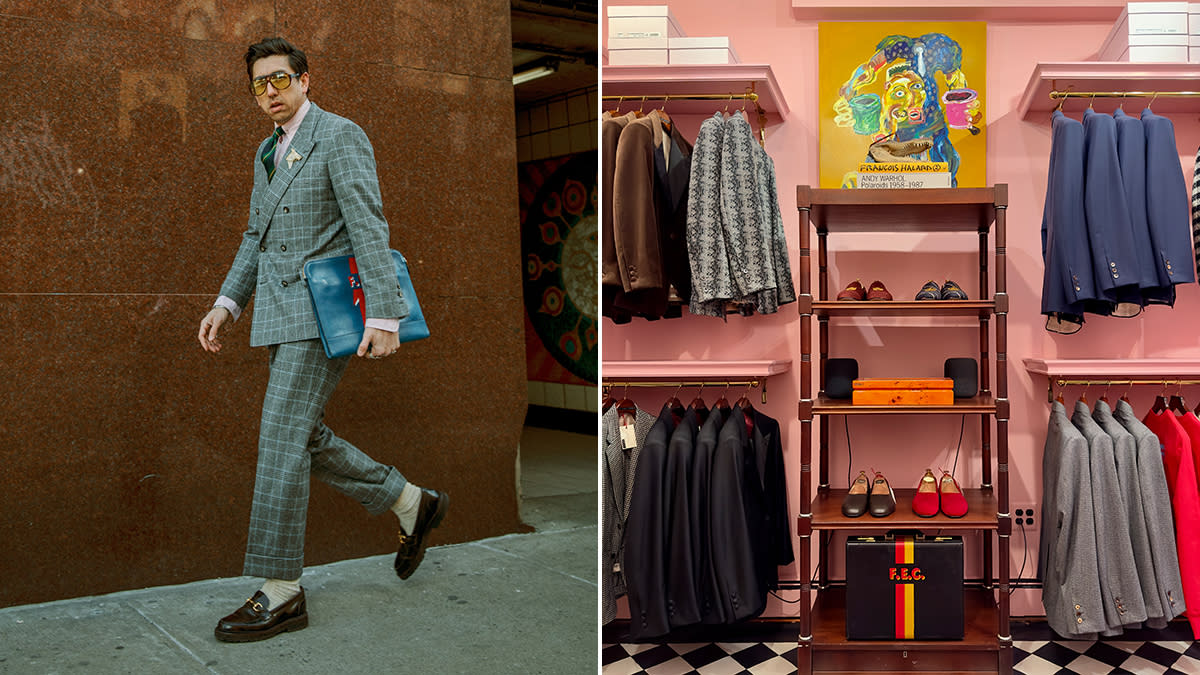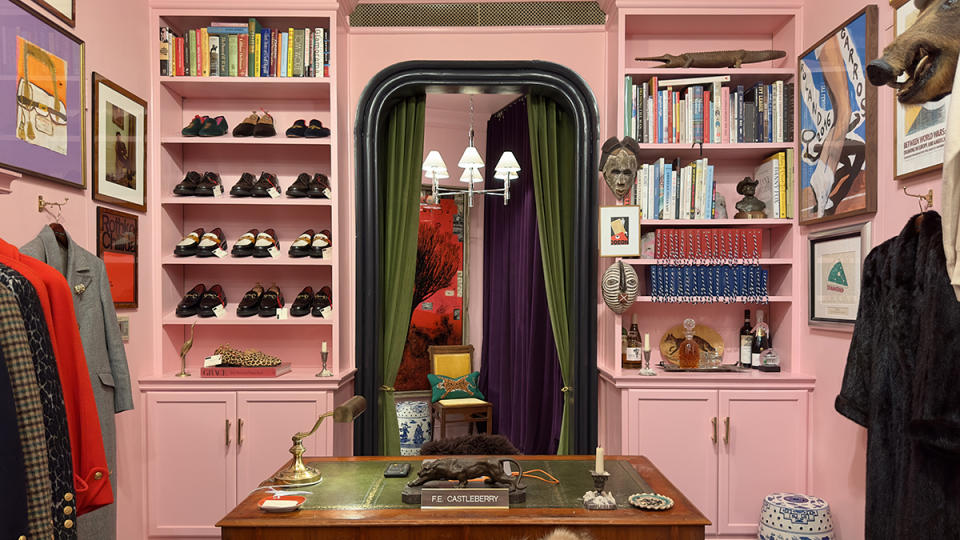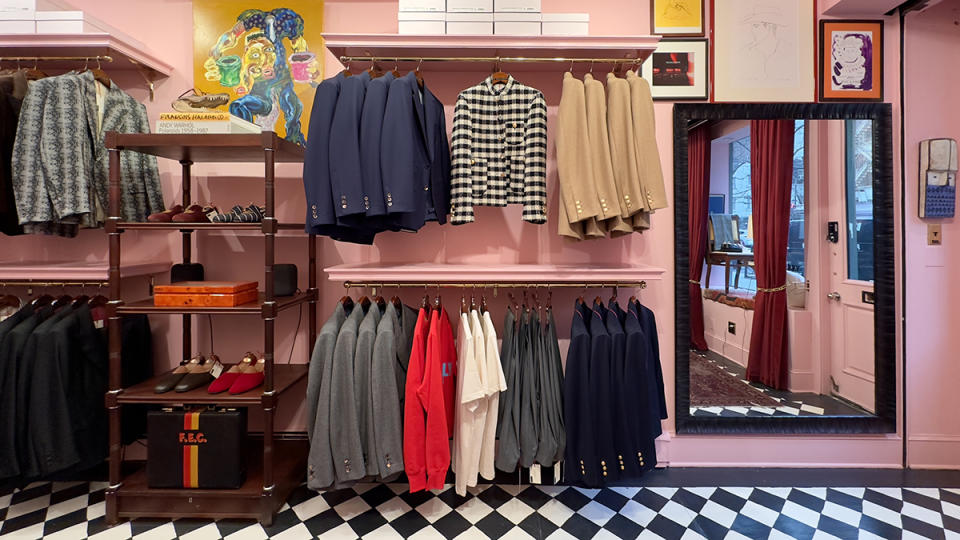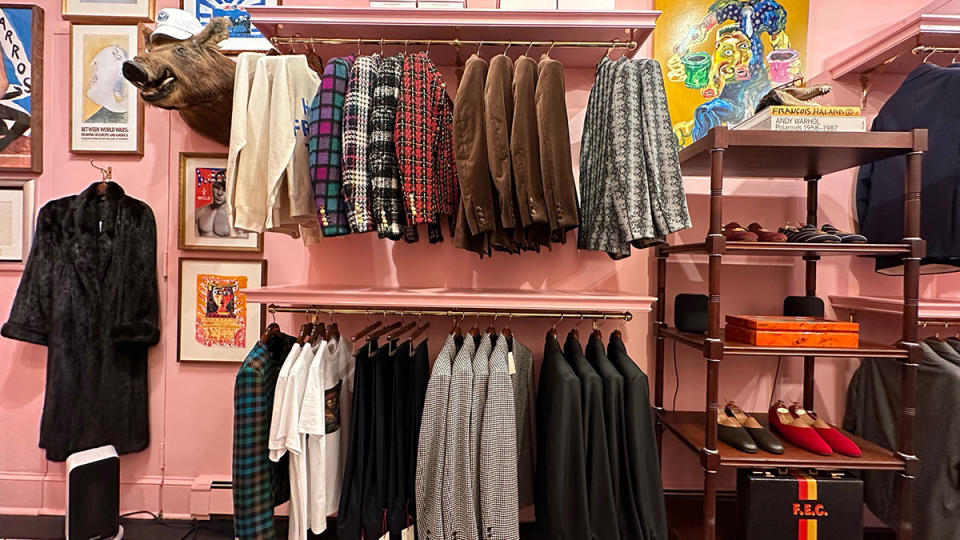New York’s Most Colorful Tailor Takes Us Inside His New Tribeca Store

It’s a few days from the grand opening of F.E. Castleberry, and the titular designer is in the store’s dressing room, painting the sides of a tailor’s pedestal that will stand before a three-way, seven-and-a-half-foot high mirror rescued from Barney’s. “Now we have a little piece of fashion retail history back here, which is really cool,” he says.
Though this may display an unusual amount of elbow grease by industry standards, it’s par for the course for Castleberry, who’s operated as a one-man-brand since first launching his made-to-measure business in 2016. The designer and photographer’s offbeat take on tailoring—combining cropped proportions, sumptuous fabrics, and eclectic touches like widely spaced-apart sleeve buttons—found enough of an audience to warrant an atelier of its own, which opened above fellow tailor J. Mueser on Christopher Street in 2020.
More from Robb Report
Usher Just Dropped Limited-Edition Apparel Ahead of His Super Bowl Halftime Performance
The 10 Best Bootcut Jeans for Men Make the Ultimate Fashion Statement
The 15 Best Shorts for Working Out, From Nike to Ten Thousand

The shoebox-shaped shop now open at 246 West Broadway is the first dedicated retail space for F.E. Castleberry, which now exists as a head-to-toe outfitter with its first ready-to-wear collection. While the Texas-born designer’s touch is clearly felt in signature pieces such as a snakeskin-print dinner jacket or a double-breasted navy coat with mismatched horn and gold buttons, it’s just as apparent in the décor.
The entire space is painted a warm, inviting pink: Nancy’s Blushes by Farrow & Ball, a personal favorite of the proprietor. “I like a pink that has a little bit of warmth to it… If you go too cool and saturated, you’re in Pepto-Bismol territory, but this just felt really sophisticated and chic,” says Castleberry.
Its near universal coverage is broken only by a black-and-white diamond-patterned floor, which Castleberry himself painted over the course of 10 days. Adding to the feel of giddy maximalism is a menagerie of framed prints and original art from friends and clients, some of whom traded their work for tailoring.

“When people walk in, one of the first questions they ask is, “Is the art for sale?” And I’ve had to sadly say no,” says Castleberry, who’s since rectified the situation by partnering with the SoHo gallery Chase Contemporary to sell some of its art in the space on consignment.
In such a visually dense space, another designer’s wares might get lost. But not Castleberry’s. Even the most nominally vanilla of his offerings, a single-breasted navy suit, is fabricated for maximal visual effect. The fabric itself is a wool-mohair blend that subtly captures light, and its buttons are luminous shell.
All the better, when such a wardrobe staple is competing with red-piped schoolboy blazers or double-breasted suits cut from dogtooth flannel, plus the designer’s line of English-made footwear that includes chunky lugged bit loafers and velvet slippers embroidered with lightning bolts or foxes. In addition, Castleberry will continue to offer made-to-measure for both men and women, which begins at $2,150 but may also be realized from ultra-small-run fabrics like a snow leopard-print wool that Castleberry sourced in the Garment District.

While the ready-to-wear remains exclusive to men—Castleberry encourages women clients to shop its smaller sizes—the shop holds a handful of vintage ladies’ overcoats from the likes of Bill Blass or Yves Saint Laurent, which feature updated buttons, linings, and trim, as well as a hand-embroidered “F.E. Castleberry Vintage” label.
“These are pieces that feel like they could belong in the world,” Castleberry says of the women’s vintage, which in the future will be limited to furs.
As the paint dries on the pedestal in the back, Castleberry draws attention to some of the shop’s furnishings, including a set of blue velvet, Empire-style window benches, and an imposing cherry desk he purchased second-hand on the Upper East Side.
“That all just comes from this desire to project a sense of permanence and belonging to a place for a while,” he says of the fixtures.
With any luck, the sartorial rebellion he’s planted on West Broadway will find deep roots.
Best of Robb Report
Sign up for Robb Report's Newsletter. For the latest news, follow us on Facebook, Twitter, and Instagram.


